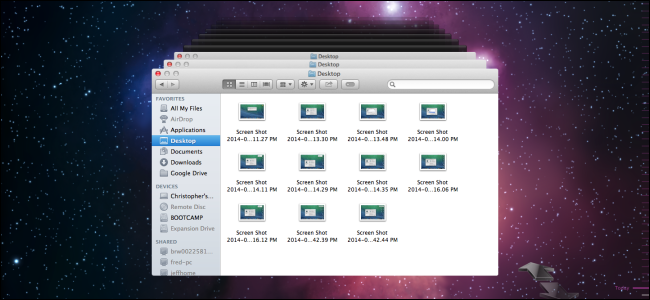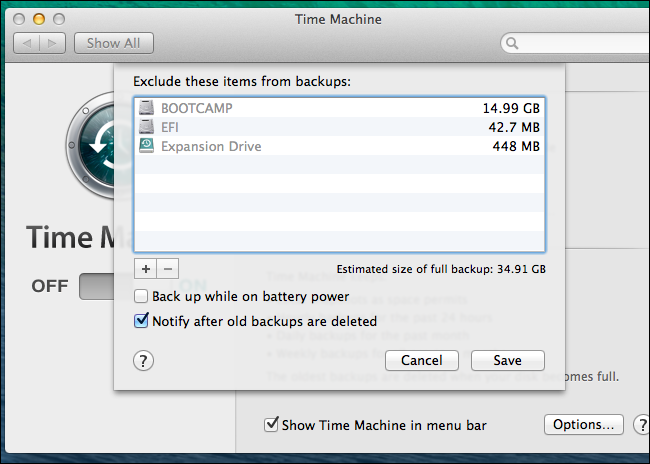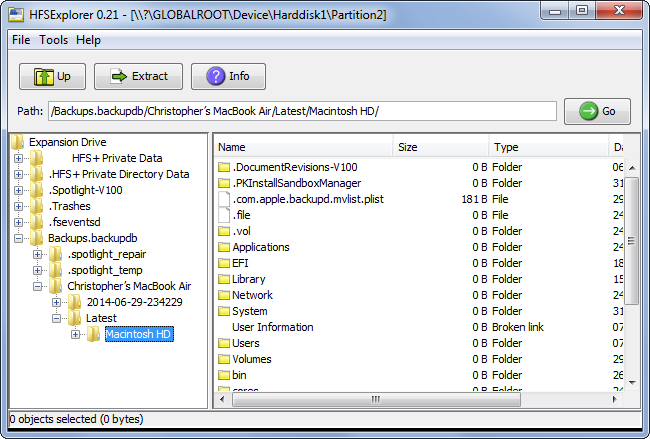
Regular backups are essential. Windows has integrated backup tools, Ubuntu has Déjà Dup, and Mac OS X has Time Machine. Time Machine backs up everything on your Mac, from system files to your personal files.
Time Machine keeps a day’s worth of hourly backups, a month’s worth of daily backups, and weekly backups until there’s no more space. MacBooks will also create “local snapshots” on their internal storage.
Back Up Your Mac the Easy Way With Carbonite

Carbonite automatically backs up all of your files, photos, and documents and stores them encrypted in the cloud.
Not only do you get cheap unlimited cloud backup, but you get versioning, deleted file protection, mobile apps so you can access your files from any device, and a whole lot more.
And for a limited time, How-To Geek readers get 2 free bonus months.
Backup Your Mac with Carbonite Today
How to Back Up With Time Machine
Connect an external drive to your Mac and you’ll be asked if you want to configure it as a Time Machine drive. Your Mac will only ask you about this if you don’t have any Time Machine drives configured already.
From here, you can simply click Use as Backup Disk and Time Machine will automatically begin backing up everything. Click the Encrypt Backup Disk option if you want to secure your backup disks with encryption.
If your drive is formatted with the Windows NTFS or FAT32 file systems, you’ll be prompted to erase its contents and reformat it with the Mac HFS+ file system.

Click the Time Machine icon on the menu bar and select Open Time Machine Preferences or open the System Settings window and click Time Machine to access its preferences window.
![]()
Time Machine can back up to external drives, network locations, and AirPort Time Capsule devices. You can have your Mac back up to multiple locations, rotating between them so you can have backups in two or more locations.
Enabling Time Machine on a MacBook will also enable the “local snapshots” feature. Your Mac will save a single daily snapshot as well as a single weekly snapshot of your files to its internal storage if the Time Machine backup drive isn’t available. This provides you with a way to recover deleted files or restore previous versions of files even if you’re away from your backup drive for a while.

While Time Machine does include everything by default, you can click the Options button in the Time Machine window and exclude certain folders. For example, you could exclude your /Applications folder to save space on the Time Machine backup.

Automatic vs. Manual Backups
The first Time Machine backup will take the longest, as everything on your drive is backed up. Future backups won’t take as long, as only new and changed files will have to be backed up.
Time Machine normally functions automatically. If your drive is connected to the computer or the network location is available, it will back up once per hour. You could disconnect your external drive when using your MacBook during the day and plug it in when you get home in the evening. Your Mac would back up when the drive is connected.
You can also choose to perform manual backups. To do this, open Time Machine’s settings screen and toggle Time Machine to “Off.” You can then click the Time Machine icon on the menu bar and select “Back Up Now” to perform a manual backup at any time. Automatic backups are usually a better option — you’ll have more backups and you won’t be able to forget about it.

Restoring Individual Files from a Backup
Click the Time Machine icon on the menu bar and select “Enter Time Machine” to enter the restore interface. This screen allows you to locate deleted files or previous versions of files and restore them.
Select a date and time at the bottom-right corner of the window to “go back in time” to the point where the file you want to restore existed. Dates in pink indicate the backup is stored on an external drive, while dates in white indicate local snapshots stored on your Mac’s internal storage.
Locate a file you want to restore, select it, and click the “Restore” button to restore it to the same folder on your Mac. If it would overwrite and existing file, you’ll be asked what you want to do.
You can also select a file and press the space bar to preview it with “Quick Look” before restoring it.

Time Machine includes a search feature. Just type a search into the search box in the Finder window inside Time Machine to search for a file you want to restore.

Restoring an Entire Mac
Time Machine also allows you to restore an entire Mac’s system state. You can only do this if the backup was created on the same model of Mac.
To do this, hold down Command + R as your Mac boots to access Recovery mode. You’ll see an option to restore your entire system from a a Time Machine Backup here.
Time Machine also backs up your OS X Recovery files to your Time Machine backup disk, so you can hold the “Option” key as you boot, select the Time Machine drive, and boot straight to recovery mode even if the recovery system is unavailable on your Mac.

Restoring Time Machine Backups on Another Mac
To restore files from a Time Machine backup on another Mac, navigate to the Applications/Utilities folder and open the Migration Assistant application. You can also press Command + Space, search for Migration Assistant and press Enter.
Connect the Time Machine backup drive and use Migration Assistant to migrate the backed up files from your previous Mac to your new Mac.

Restore a Time Machine Backup on Windows
Time Machine requires a drive formatted with the Mac HFS+ file system. To access these files from a Windows PC, you’ll need to install an application like the free HFSExplorer that can read a HFS+ file system and copy files from it. HFSExplorer unfortunately requires Java, but it’s the only free application we know of that allows you to read HFS+ file systems on Windows.

If you’d just like to stop using Time Machine and use the drive with a Windows PC, you can reformat the drive with the NTFS or FAT32 file systems using the Windows Disk Management tool.
 8 Backup Tools Explained for Windows 7 and 8
8 Backup Tools Explained for Windows 7 and 8 How to Back Up Ubuntu the Easy Way with Déjà Dup
How to Back Up Ubuntu the Easy Way with Déjà Dup
Time Machine isn’t the ideal cross-platform backup solution, but it is very powerful. Where Windows 8 has File History that only works with specific folders and a less convenient system image backup feature, Time Machine does everything in one interface. Time Machine can also easily encrypt your backups. On Windows, you’d have to set up BitLocker on a Professional edition of Windows 8 to encrypt File History backups.